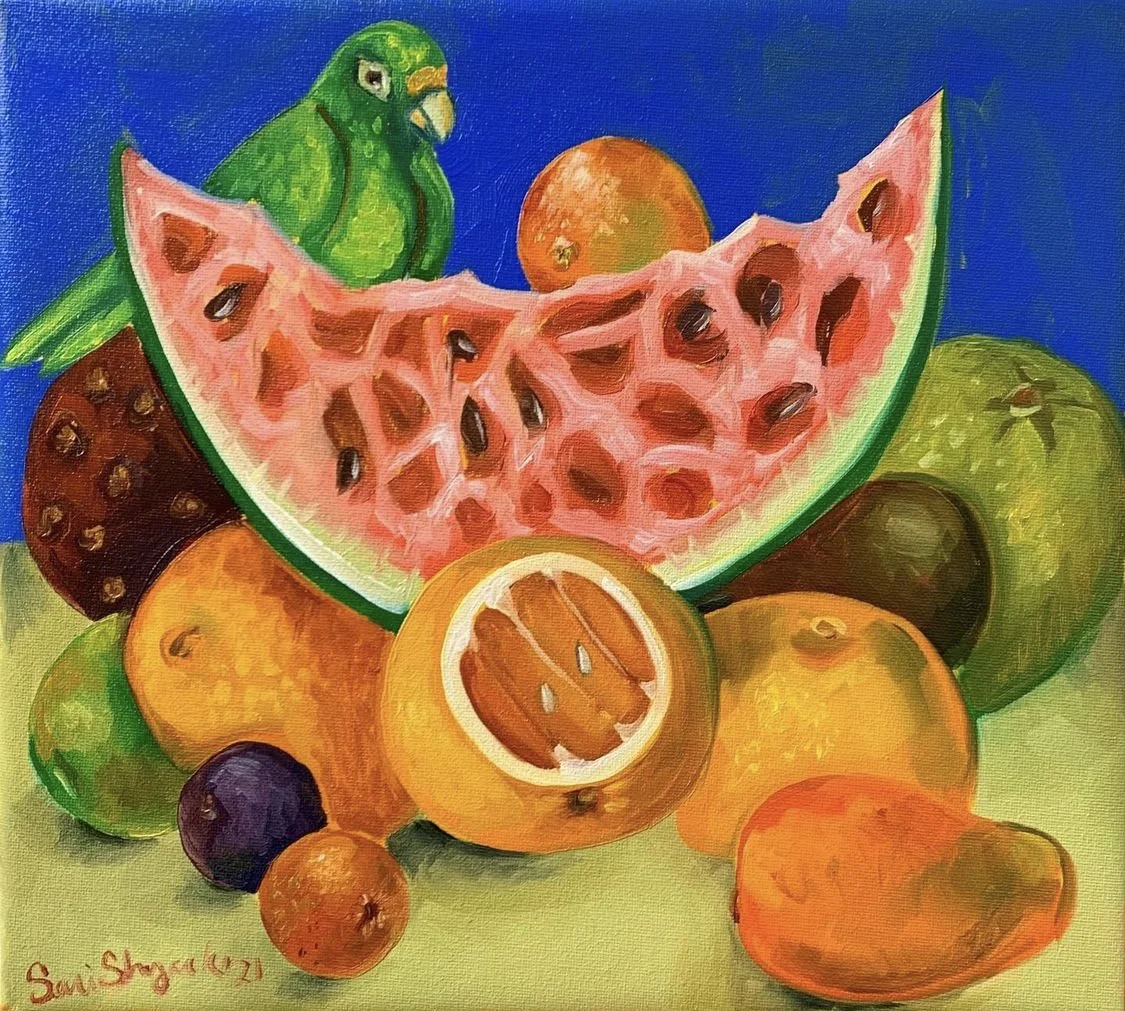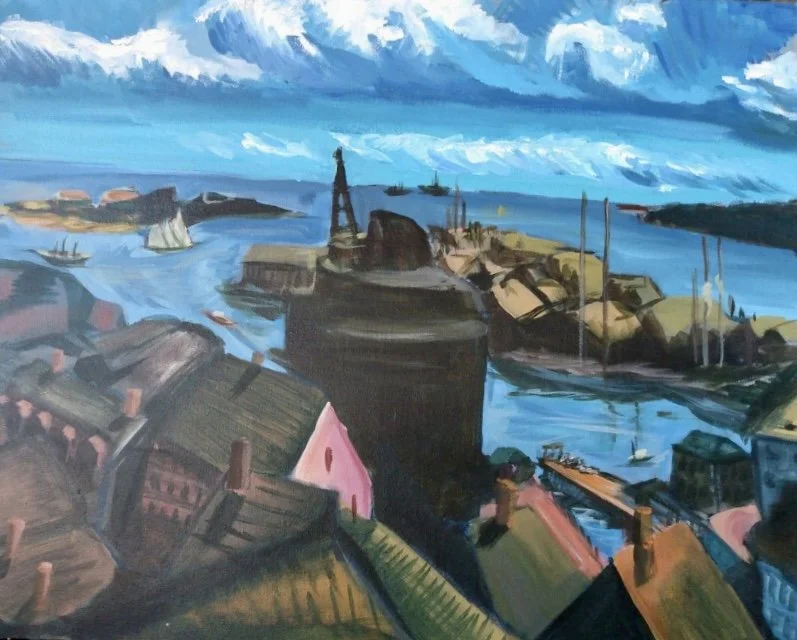Why You Should Do Master Studies
My Walmart Scene (2022) inspired by the concepts and technique of David Hockney
Some artists start their painting journey with a clear vision in their head of what they want to make and where they want to go. However, that’s not the case with most artists. Most artists have plenty of ideas and themes they hope to tackle, but the actual “getting started” part can be pretty tricky. When it comes to choosing what to paint, there’s often so many choices that it is overwhelming.
This is why I think doing a master study can be a helpful step in any painter’s practice. I’ve studied several of my favorite artists by recreating their work in order to understand more about their technique and to consider the ideas and concepts that made them historically important. I’ve dedicated two Not Sorry Art School units to master studies— first on Frida Kahlo and then David Hockney— not only because they are famous painters, but because their respective approaches make the work they produced exceedingly inspirational to me.
Here’s more on master studies and why I value them:
What Is A Master Study?
A bit obvious now that I’ve introduced this topic, but it’s worth defining what constitutes a master study. Because it’s not just copying an artist’s painting and being done with it. A master study is an attempt to understand the process and creative choices of a painter, typically an established one, in an effort to see how an artist may arrive at a finished painting. You do this by studying the work, ideally in person, while also researching the artist’s history and the message the work conveys. To soak up the extent of the process, painting the scene should be your final step.
Getting back to the endless choices that painting presents, studying a master’s process allows you to understand one way of arranging marks on a surface. There are countless others, but if you admire the work of the artist you’re studying, their techniques could be helpful for you in identifying your style or expanding it.
My Master Studies
In 2021, I did my first Not Sorry Art School master study on Frida Kahlo, the 20th century Mexican artist whose self-portraits told her personal history of relationships and trauma while expressing her love of her heritage, nature, animals and more.
The portraits are her most famous works, but she painted much more than that and for my purposes I chose to study her still life style and inspirations. The piece of hers I painted, a rich fruit still life featuring a partially eaten watermelon and a parrot, was a fun reminder of the importance of symbolism in art and the ways in which we can weave secondary meaning into a painting using familiar objects. As a frequent painter of still life myself, I took inspiration from Kahlo’s arrangement of objects and how she could individualize a subject as well-traveled as the fruit still life.
My version of Frida Kahlo’s Still Life with Parrot and Fruit (1951)
My next course section (to be released soon) is a study of the English landscape and portrait painter David Hockney. Hockney’s unique perspective and bold colors immediately stand out in his work, and some of his most famous works, inspired by his adopted home in Southern California, lend themselves perfectly to his style.
In truth, his colors are what initially caught my eye years ago, but in studying him more for this unit I marveled at his use of perspective to challenge the way we see. Hockney speaks about the limitations of a camera compared to the eye in a way that underscores the added depth a painting can embody. By often employing multiple vanishing points in his paintings, Hockney creates a more authentic view of the way we see that differs drastically from most still images.
In recreating his 1967 piece, A Lawn Being Sprinkled, I was struck by the identical sprinklers evenly spread across a detailed lawn set against a flat house and fence that seem further out of reach with each glance. I came away from the study with a greater appreciation for the excitement that landscape scenery presents and the endless ways in which perspective can be manipulated.
My version of David Hockney’s A Lawn Being Sprinkled (1967)
In my recent master studies, I have mixed the techniques of the master with my own style to create a sort-of hybrid painting that displays the effect that studying another artist can have. My Walmart Scene is one such example.
In college, I painted two John Sloan pieces as part of a master study. His architectural landscape work lined up with the paintings I was making as a student at the time, and seeing work that felt close to the style I was just starting to carve out for myself was highly encouraging and rewarding. Completing his master study felt like I had added another tool to my kit that I could then use to keep developing my eye and brushwork.
My version of a John Sloan’s Gloucester Harbor (1916)
My version of John Sloan’s Backyards, Greenwich Village (1914)
———
So, if you’re struggling to identify your style or you’re having trouble knowing what to paint, I highly encourage you to explore a master study. There are so many great artists out there and diving into a painter’s history and technique is something I’ve found to be incredibly fun and inspirational. In my NSAS master studies, I walk you through all the steps I take in completing such a project, so check out my Frida Kahlo unit if you need guidance on how to start.





